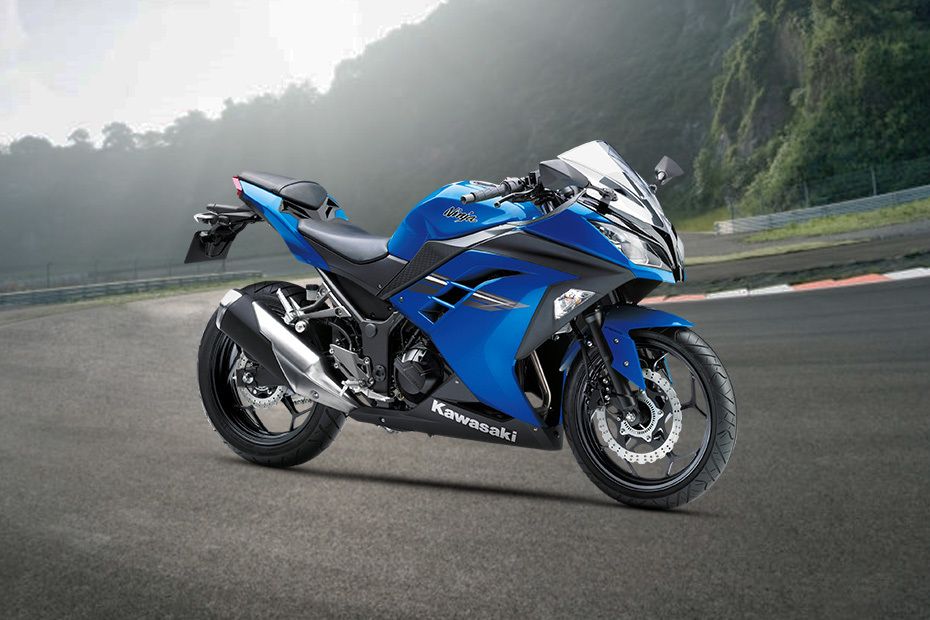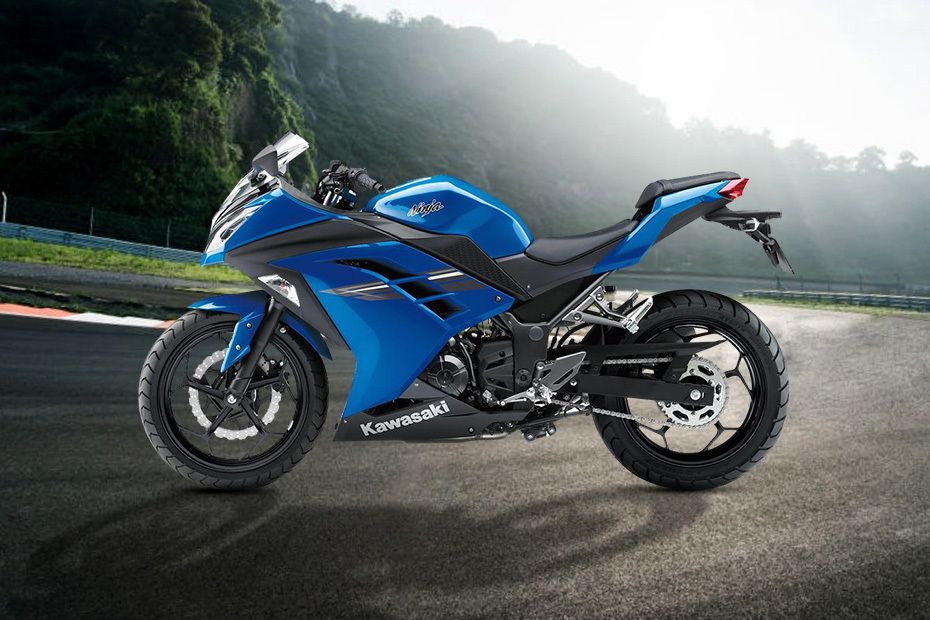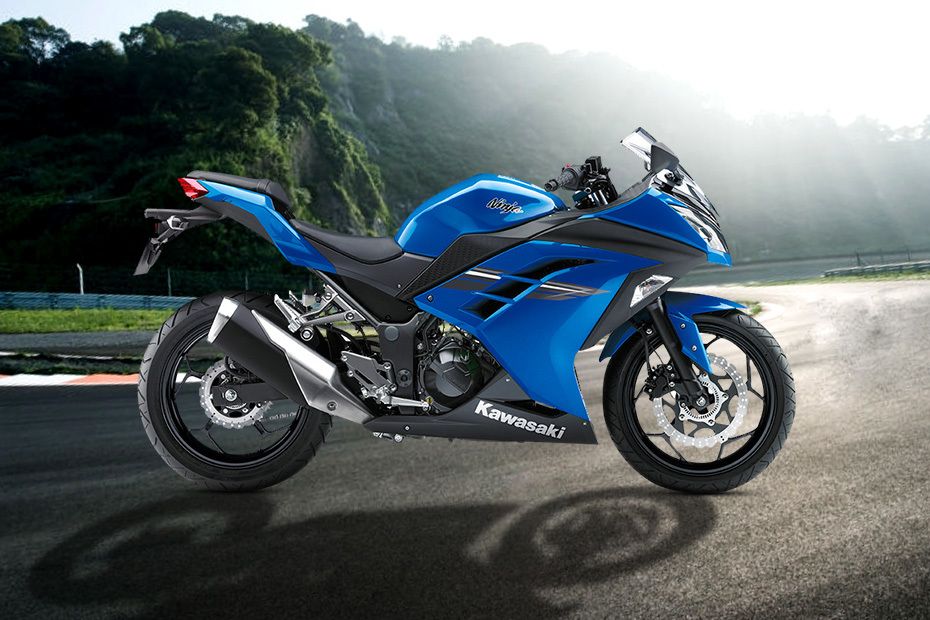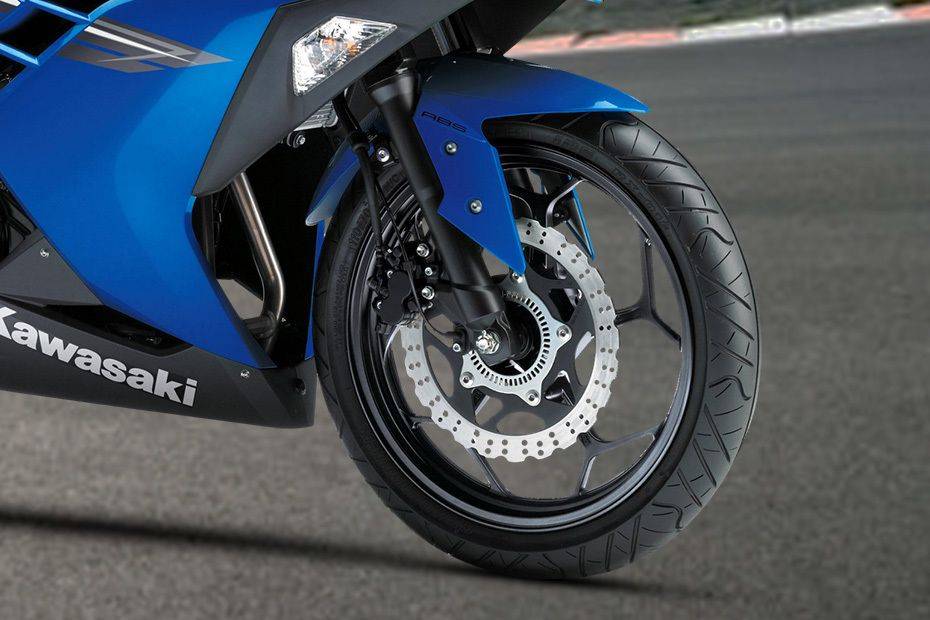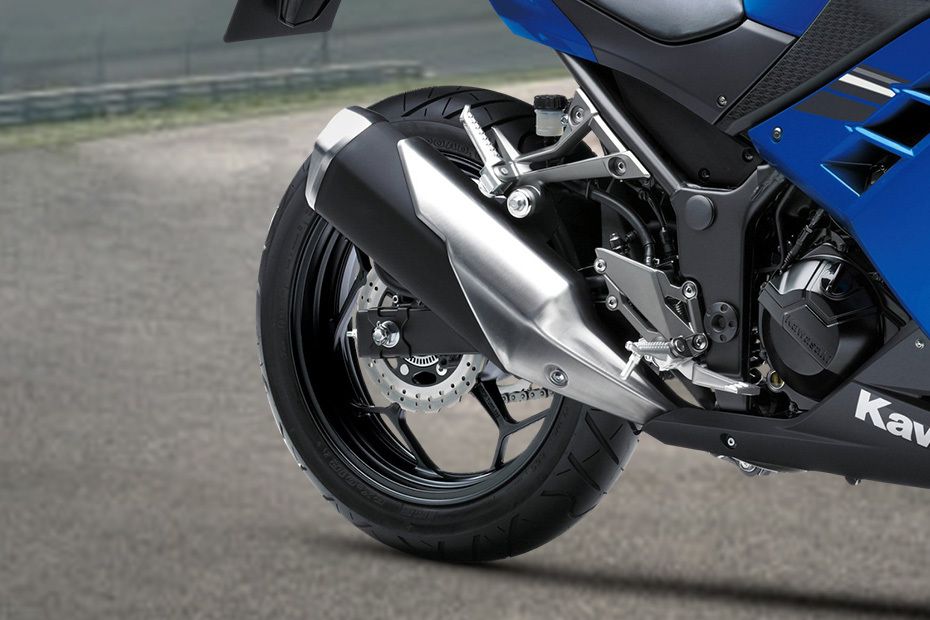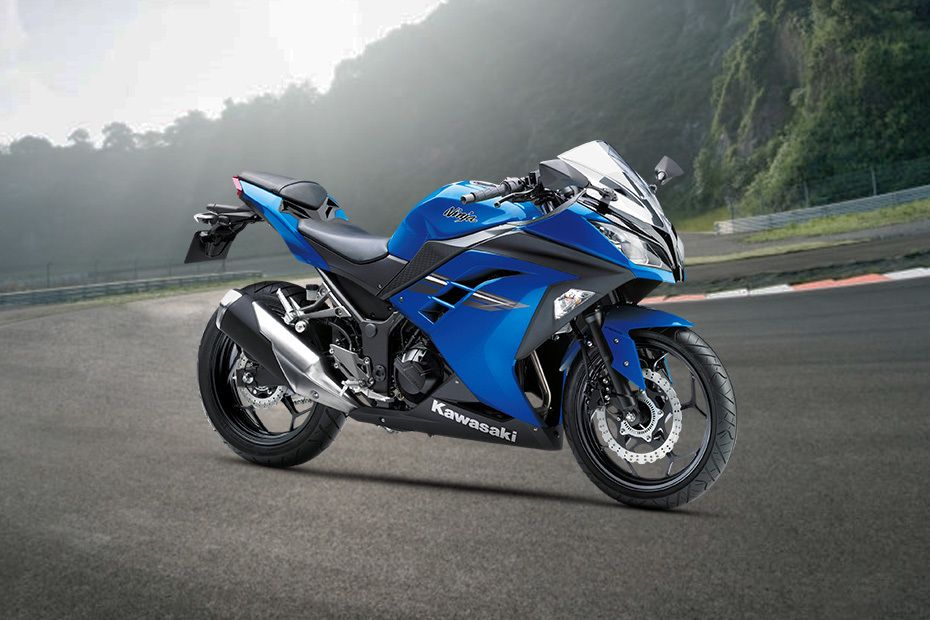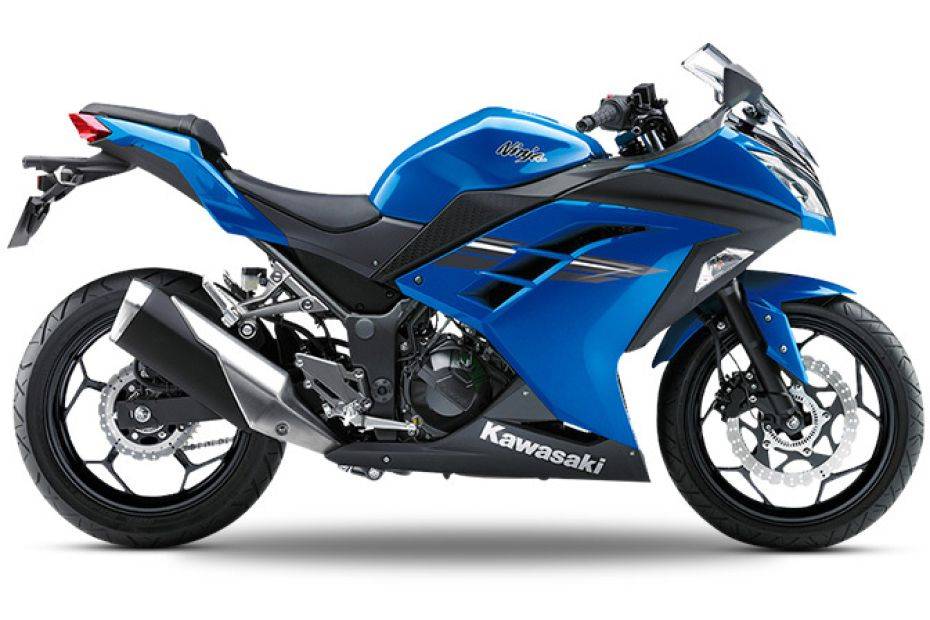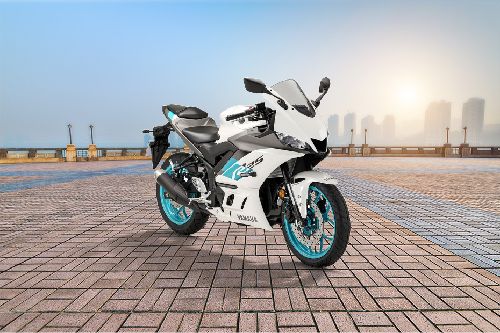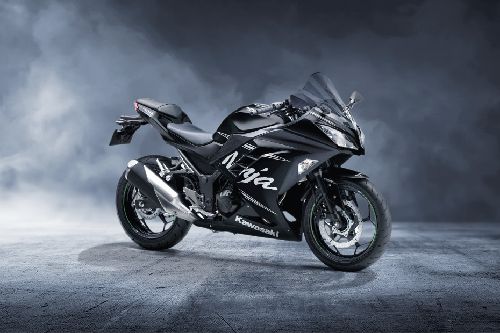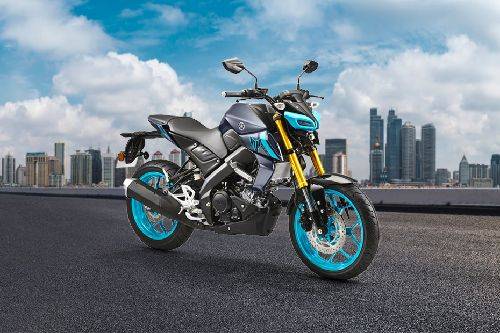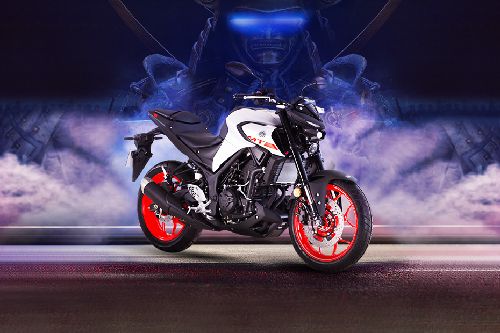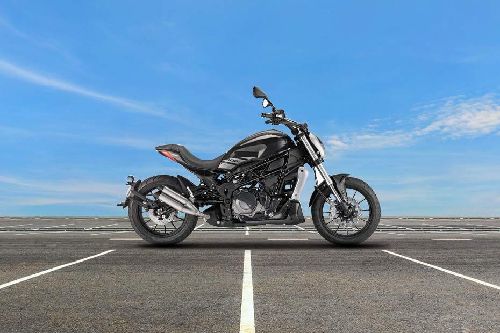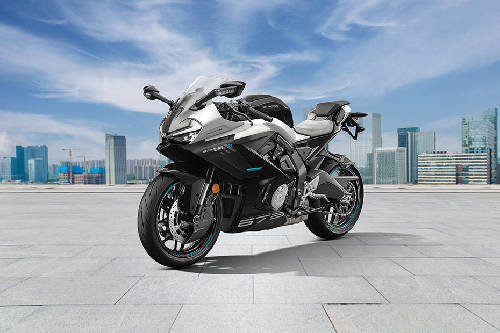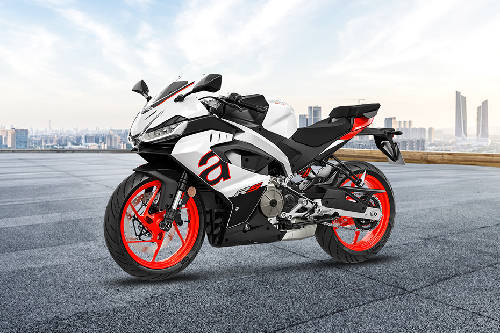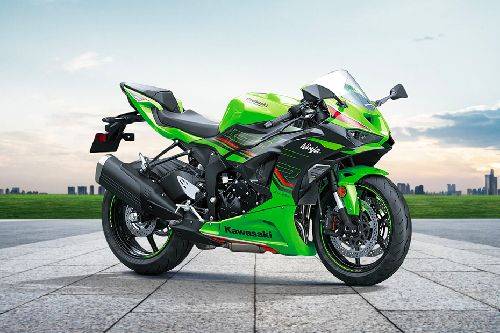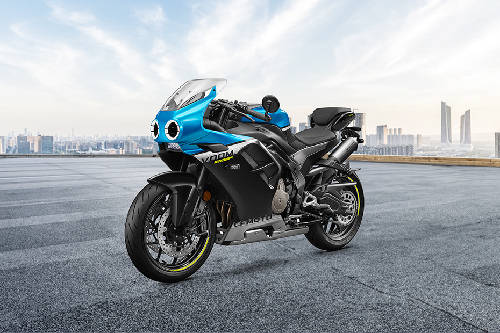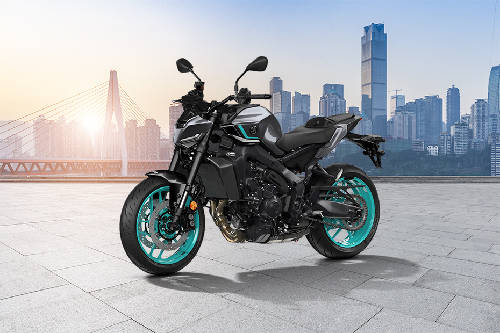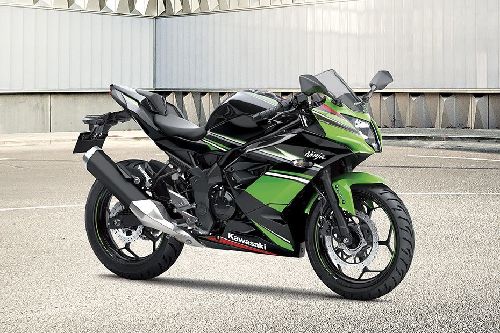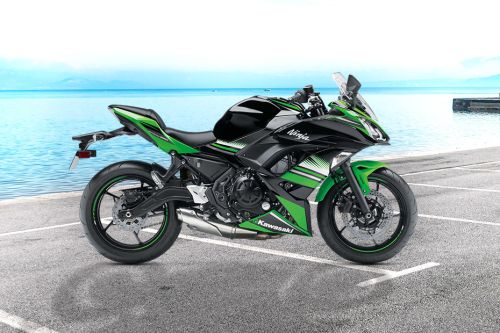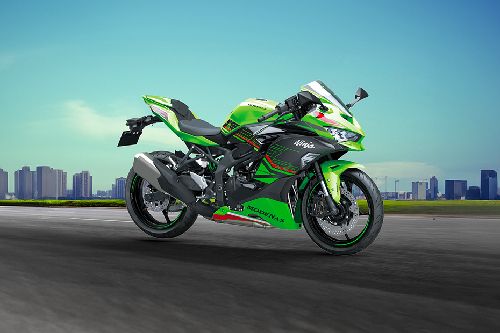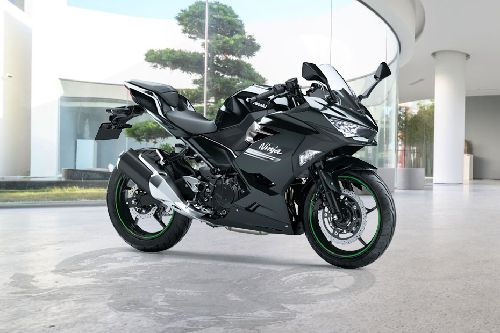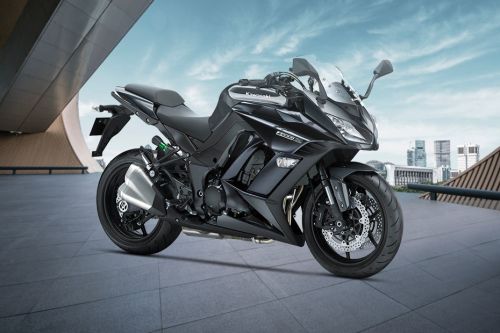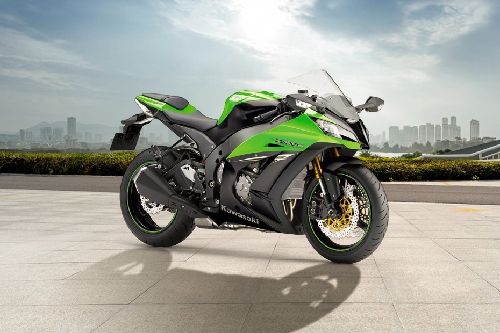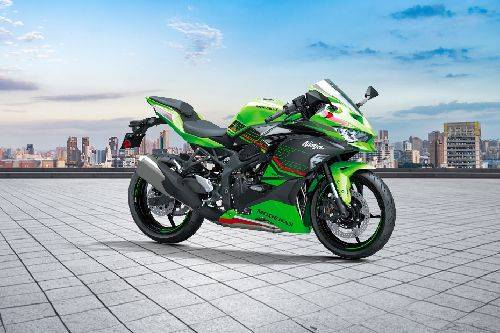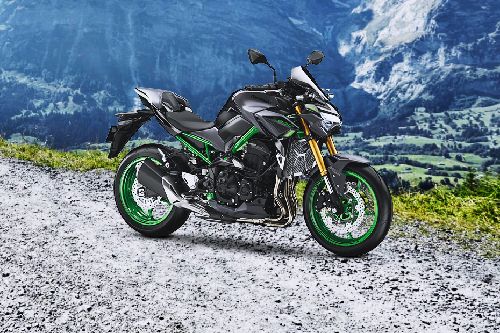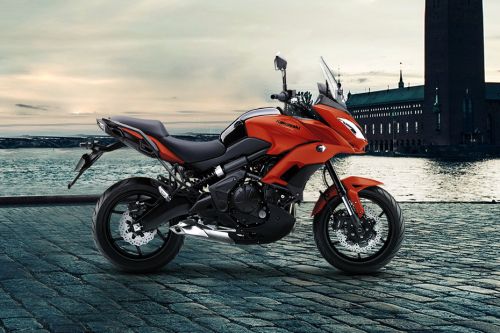Ninja 300 ABS Pros & Cons
Get the better insight and helps to buy or notBig bike stance,
Crisp performance
Riding dynamics
Lack of features
Pillion comfort
Recent Updates of Ninja 300 ABS
Ninja 300 ABS is a very practical quarter-litre motorcycle from Kawasaki which helped the Team Green to bounce back in the sports bike market. The Ninja 300 ABS looks very aggressive from the front due to its dual angular headlamps and transparent visor. The side profile of this bike looks stylish because of the amount of fairing it gets and a muscular fuel tank. This sports bike is equipped with a decent instrument cluster that shows information such as speedometer, odometer, trip-meter and fuel gauge. The Ninja 300 is equipped with four-stroke, liquid-cooled, parallel twin, 296 cc engine. The engine is coupled with a 6-speed gearbox and produces 39 PS of power and 27 Nm of maximum torque. Handling of this bike is made easy by telescopic forks at the front and Uni-Trak suspension at the rear. Braking is taken care of by disc brakes that are equipped with ABS. The Ninja ZX10R is available at a price of RM 25, 464 and comes in a shade of blue.
Gallery of Ninja 300 ABS
- exterior
- color
Kawasaki Ninja 300 ABS Exterior Images
Exterior ImagesKawasaki Ninja 300 ABS has 7 images of its exterior, top Kawasaki Ninja 300 ABS 2024 exterior images include Slant Rear View Full Image, Left Side View Full Image, Right Side Viewfull Image, Front Tyre View, Head Light View, Exhaust View, Marketing Image.
Read MoreKawasaki Ninja 300 ABS Colours
ColorsKawasaki Ninja 300 ABS is available in 1 different colors - Blue.
Kawasaki Ninja 300 ABS Review 2024
In today’s time, Kawasaki has got a versatile lineup in the entry-level 250-400 cc category bikes, but it is the Ninja 300 which still is going strong as the most in-demand quarter-litre motorcycle from Kawasaki. It is the popularity of the Ninja 300 that despite its age, it is highly regarded as the motorcycle to vouch for if you are opting for an entry level fully faired motorcycle. The Ninja 300 retails for RM 25,450 and is being offered in a sole shade of blue.
Kawasaki Ninja 300 ABS Design
In the last five years, the Kawasaki Ninja 300 might have seen negligible changes in terms of design. However, such is the charm of overall styling that despite its age, it doesn’t feel much dated in appearance.
The dual angular headlamps at the front do give the Ninja 300 a mean and striking front fascia, however, we would love to see LED units here since the trend of LEDs is on right now. The transparent visor above the headlamps is not big enough, however, its short and pointy design does add in the aggression at the front. The trapezoidal turn indicators mounted integrated within the front fairing brings in some uniqueness to the Ninja 300.
Moving sideways, the large fairing gives the Ninja 300 a purposeful and big bike stance. The fuel tank is big and curvy with roomy knee recesses, which makes it accommodating for all kinds of rider heights. The lifted up tailpiece is wide in appearance and ends up in a small LED tail lamp, with a short fender attached to it at the rear. The Ninja 300 does come with split seats, and while the pillion seat is big and wide, it’s height as well as less practical grab rails reduce its overall comfort.
The one aspect which needs to be changed in the Ninja 300 has to be the part digital instrument console. While the analogue tachometer and the LCD screen showcasing digital speedometer, odometer, trip meters, and fuel gauge are quite informative, the overall layout feels aged in today’s age. The Ninja 300 is also equipped with clip-on handlebars and fairing mounted rear view mirrors, two pre-requisites for supersport motorcycles. Apart from the aforementioned things, there is no other cosmetic feature to make the Ninja 300 a motorcycle from today’s day and age.
Ninja 300 ABS Ride & Handling
Like all the other Ninjas on sale in the country right now, the Ninja 300 too is designed around a well-engineered chassis, making it a sweet handler. The 37 mm telescopic forks at the front and Bottom-Link Uni-Trak with gas-charged shock and 5-way adjustable preload settings are tuned on a stiffer side, which makes the Ninja 300 quite an agile tool around corners as well as on straights. The motorcycle is equipped with a 296 mm petal disc at the front and a 220 mm petal disc at the rear.
Kawasaki Ninja 300 ABS Engine & Fuel Consumption
The Kawasaki Ninja 300 is fitted with a four-stroke, liquid-cooled, parallel twin, 296 cc engine, which is there on the Ninja 300 since day one of its inceptions. In the current guise, the engine produces 39 PS of maximum power output and 27 Nm of peak torque output. Coupled to a 6-speed gearbox, the engine impresses with its power delivery and refinement till redline, as it throttles all the way to the redline effortlessly. However, near the redline, the vibrations begin to creep in, though they do not feel to bothersome.
Ninja 300 ABS Braking & Safety
Being an entry-level motorcycle, the Kawasaki Ninja 300 is not heavily equipped with high-end electronic riding aids. However, the presence of dual channel ABS as well as slip and assist clutch makes the Ninja 300 a safe motorcycle to handle.
Kawasaki Ninja 300 ABS Verdict
The Kawasaki Ninja 300 might not be a flashy and ultra-modern as some of its rivals from the European mates. However, when it comes to overall mechanical packaging, the Ninja 300 makes a strong case for itself. The big bike stance is surely impressive and keeps the Ninja 300 in league with some of the middleweight motorcycles in terms of appearance. However, we do wish it comes with a few more new-age features to make it feel lesser dated than what it is.
Kawasaki Ninja 300 ABS Owner Reviews
Write a Review- All (2)
- Features (2)
- Specs (1)
- Mileage (1)
- Engine (1)
Latest Question
Q. What are the Pros and Cons of Kawasaki Ninja 300 ABS?
Q. What is the Kawasaki Ninja 300 ABS seat height?
Q. Is Kawasaki Ninja 300 ABS available in Electric?
Q. What is the Kawasaki Ninja 300 ABS fuel tank capacity?
Q. What are the top variants of Kawasaki Ninja 300 ABS?
